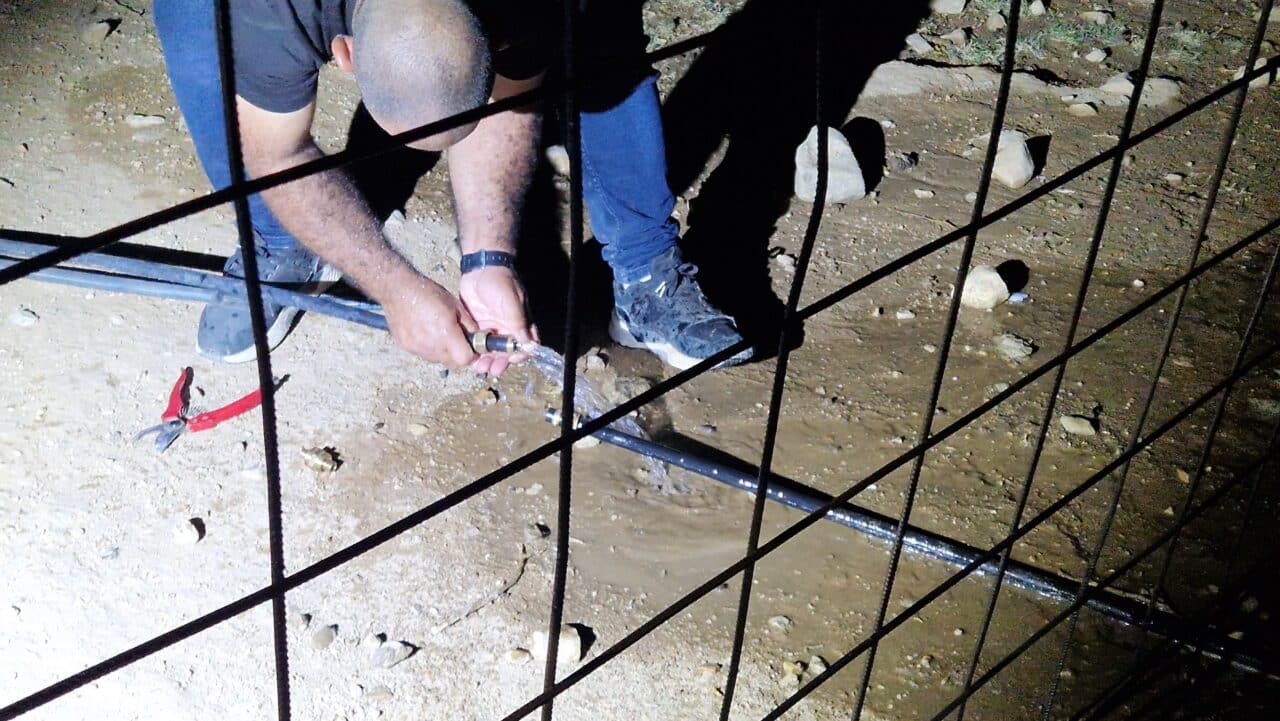Forced removal of Bedouin around East Jerusalem
In 2011 the Israeli Government’s plan, to forcibly remove 27,000 bedouin from the Jordan Valley and East Jerusalem, came to light. They aim to complete this wholesale ethnic cleansing of the Bedouin population, and their removal into controlled enclosures, within 3-6 years.
The report below, published in arabic by the Palestine News Network on 22nd June 2012, shows how they they started this process many years ago, with the removal of the Jahlin communities of East Jerusalem into camps near Abu Dis Rubbish Dump.
 (Translated into English by Jordan Valley Solidarity)
(Translated into English by Jordan Valley Solidarity)
“Scattered in the arid hills stretching from Jerusalem to the Dead Sea there are Bedouin tents and flocks of sheep, giving residents and visitors a glimpse of how the land was in ancient times.
“The Bedouin camps with their animal shelters, water tanks and agricultural tractors may look like they haven’t changed for generations, but the Bedouin heritage is gradually fading as Israel removes the camps to make room for the expansion of urban Jewish settlements.
“Palestinian Bedouins say they are forced to abandon many of their traditional practices as they rely on the land, cattle and tents for their livelihood, all of which are targets of Israeli restrictions.
“Mohammed, a native of Qrchan Jahalin said: ‘Our way of life depends on the ability to move around, live in tents scattered over large areas of land and tend our livestock, which we love to do’ He went on ‘The Israeli authorities do not understand our way of life’. He was sitting in front of his tent, built with wooden supports and with heavy carpets covering with floor.
“Israel says the Bedouin tents are constructed illegally without permits and can sometimes be an obstacle to urban planning. In the outermost regions in the occupied West Bank the Israeli army have evacuated Bedouins saying that they are using the area for training with live ammunition.
“Bedouin in the highlands east of Jerusalem do not have running water, an electricity network, medical facilities or sanitation in their tented communities. They live a simple life, with the goats, sheep and children roaming barefoot under the hot sun in the summer months, and the short cold winter months.
“These communities are descended from the Jahalin tribe – displaced people who came originally from a village near Beer Sheva after the creation of the state of Israel in 1948.
“The United Nations Relief and Works Agency says that nearly 17,000 Bedouins live in the occupied West Bank, struggling because of Israeli restrictions on freedom of movement and freedom of access to pastureland, as they are located in ‘Area C’, where Israel retains authority over planning and zoning.
“Tens of thousands of other Bedouin living in Israel also face discrimination as Israeli officials attempt to force them off their land and pushing them to live in urban areas, contrary to their traditional lifestyle.
“In the mountain village by the rubbish dump in Abu Dis, there is a smell of garbage and non-stop noise from the rubbish trucks carrying waste from nearby Jerusalem.
“Israel forcibly transferred and about 1,050 Palestinians from the Jahalin to this region in the late 1990’s when the land was annexed to the Jewish settlement of Ma’ale Adumim. They were compensated financially for their transfer of land, and connected to electricity and water networks, but their traditional lifestyle ended and they had to sell most of their cattle.
“In 2006 Israel agreed to another plan for the resettlement of approximately another 2400 Jahalin to the rocky hills close to the site closest to the Abu Dis rubbish dump”.


